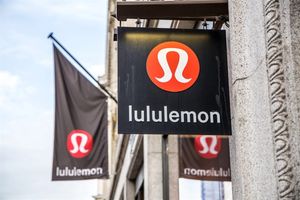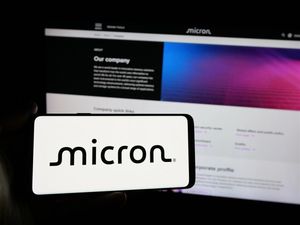
Online fashion resale marketplace ThredUp (NASDAQ: TDUP) reported Q1 CY2025 results beating Wall Street’s revenue expectations, with sales up 10.5% year on year to $71.29 million. The company expects next quarter’s revenue to be around $73.5 million, close to analysts’ estimates. Its non-GAAP loss of $0.04 per share was $0.02 above analysts’ consensus estimates.
Is now the time to buy TDUP? Find out in our full research report (it’s free).
ThredUp (TDUP) Q1 CY2025 Highlights:
- Revenue: $71.29 million vs analyst estimates of $68.32 million (10.5% year-on-year growth, 4.4% beat)
- Adjusted EPS: -$0.04 vs analyst estimates of -$0.06 ($0.02 beat)
- Adjusted EBITDA: $3.81 million vs analyst estimates of $2.17 million (5.3% margin, 75.1% beat)
- The company lifted its revenue guidance for the full year to $286 million at the midpoint from $275 million, a 4% increase
- Operating Margin: -7.6%, up from -19.2% in the same quarter last year
- Free Cash Flow Margin: 5.5%, up from 3.4% in the same quarter last year
- Orders: 1.37 million, up 190,000 year on year
- Market Capitalization: $845.5 million
StockStory’s Take
ThredUp’s first quarter results were shaped by accelerating new customer acquisition and investments in its marketplace experience. Management attributed the double-digit revenue growth and improved profitability to a significant increase in new buyers, driven by enhanced product discovery features and more efficient marketing. CEO James Reinhart noted that active buyer growth turned positive for the first time in over a year, with April marking the strongest month for new customer acquisition in company history. He credited improvements in inventory processing and AI-driven search tools for supporting both buyer and seller engagement.
Looking ahead, management raised its full-year revenue outlook, emphasizing that the updated guidance reflects operational momentum rather than macroeconomic tailwinds. Reinhart explained that potential benefits from recent U.S. tariffs on new apparel and the closure of the de minimis import loophole were not factored into guidance but could represent additional upside if consumer behavior shifts. CFO Sean Sobers stated, “We have no tailwinds related to tariffs in our guidance,” underscoring that expectations for the rest of the year are based on current business trends and not external policy changes.
Key Insights from Management’s Remarks
ThredUp’s management focused on the operational and strategic factors that contributed to its outperformance in Q1, while also highlighting evolving industry dynamics and product innovation.
- Buyer Acquisition Momentum: Management emphasized that record new buyer growth was supported by targeted marketing and improved product experience, with new buyers up 95% year-over-year and active buyers growing for the first time in over a year.
- AI-Driven Discovery Tools: The company rolled out new AI-powered features such as visual search, personalized product listings, and a “shop similar” function, which management claims have raised conversion rates and driven deeper user engagement. Early results from the beta “Shop Social” feature, which connects social media inspiration to ThredUp’s catalog, showed nearly four times higher conversion than standard searches.
- Seller Experience Investments: ThredUp is expanding its range of seller tools, including the ability to sell items alongside returns and enhanced dashboards for premium sellers. The company reported that 8% of returns now include items for resale, and premium items deliver higher contribution margins.
- Macro Environment Effects: Management noted that while U.S. apparel tariffs and the closure of the de minimis loophole were announced late in the quarter, their immediate impact was limited. Reinhart suggested these changes could improve ThredUp’s value proposition relative to new apparel over time, but results so far were primarily due to internal execution.
- Resale-as-a-Service (RaaS) Strategy Shift: Leadership announced an open-sourcing initiative for its RaaS technology, making it easier for brands to launch resale programs. ThredUp is lowering usage-based fees and providing marketing support, aiming to build a scalable, industry-wide “universal recommerce layer.”
Drivers of Future Performance
ThredUp’s management expects that ongoing investments in marketing, AI technology, and seller engagement will underpin revenue growth and operational efficiency for the rest of the year.
- Sustained Marketing Investment: Management indicated plans to continue investing in marketing, given attractive customer acquisition costs and payback periods. Greater marketing efficiency, partly due to reduced competition from fast fashion advertisers, is expected to support further buyer growth.
- AI and Product Experience Enhancements: The rollout of new AI-powered discovery features, including personalized recommendations and Shop Social, is anticipated to improve conversion rates and engagement, contributing to higher revenue per buyer over time.
- External Policy Shifts as Potential Upside: While not included in current guidance, management highlighted that recently announced tariffs and closure of the de minimis loophole could make secondhand shopping more attractive compared to new apparel, potentially benefiting ThredUp if these trends persist.
Top Analyst Questions
- Ike Boruchow (Wells Fargo): Asked what is driving the buyer and revenue outperformance and what gives management confidence to raise guidance amid uncertainty. Reinhart cited ongoing momentum in new buyer acquisition and operational execution as key factors.
- Dana Telsey (Telsey Group): Inquired about demographics of new customers and the sustainability of marketing efficiency. Reinhart explained that new buyers skew slightly more toward middle to upper income and that efficient marketing is supported by product improvements.
- Dylan Carden (William Blair): Questioned whether ThredUp will keep marketing spend at high levels and how the company is leveraging margins. Management said incremental profits will be reinvested into marketing, and improved contribution margins are driving better bottom-line results.
- Bernie McTernan (Needham & Company): Asked about macro assumptions in guidance and the timeline for the Shop Social feature. Management clarified that tariff benefits are not embedded in guidance and that Shop Social will be rolled out more broadly soon.
- Kunal Madhukar (Water Tower Research): Queried about trends on the seller side and average revenue per order. Reinhart noted strong seller engagement and explained that lower average revenue per order is due to a higher mix of new buyers receiving first-time discounts.
Catalysts in Upcoming Quarters
In the coming quarters, we will be monitoring (1) the pace of active buyer growth and whether April’s acquisition momentum is sustained, (2) the effectiveness and adoption rates of AI-driven product features such as Shop Social in driving higher conversion, and (3) any measurable impact from tariffs and de minimis policy changes on consumer demand for secondhand apparel. Continued execution on operational efficiency and seller engagement will also be key indicators of long-term progress.
ThredUp currently trades at a forward EV-to-EBITDA ratio of 97.2×. Is the company at an inflection point that warrants a buy or sell? The answer lies in our free research report.
Stocks That Trumped Tariffs in 2018
Donald Trump’s victory in the 2024 U.S. Presidential Election sent major indices to all-time highs, but stocks have retraced as investors debate the health of the economy and the potential impact of tariffs.
While this leaves much uncertainty around 2025, a few companies are poised for long-term gains regardless of the political or macroeconomic climate, like our Top 9 Market-Beating Stocks. This is a curated list of our High Quality stocks that have generated a market-beating return of 176% over the last five years.
Stocks that made our list in 2020 include now familiar names such as Nvidia (+1,545% between March 2020 and March 2025) as well as under-the-radar businesses like the once-small-cap company Comfort Systems (+782% five-year return). Find your next big winner with StockStory today.






